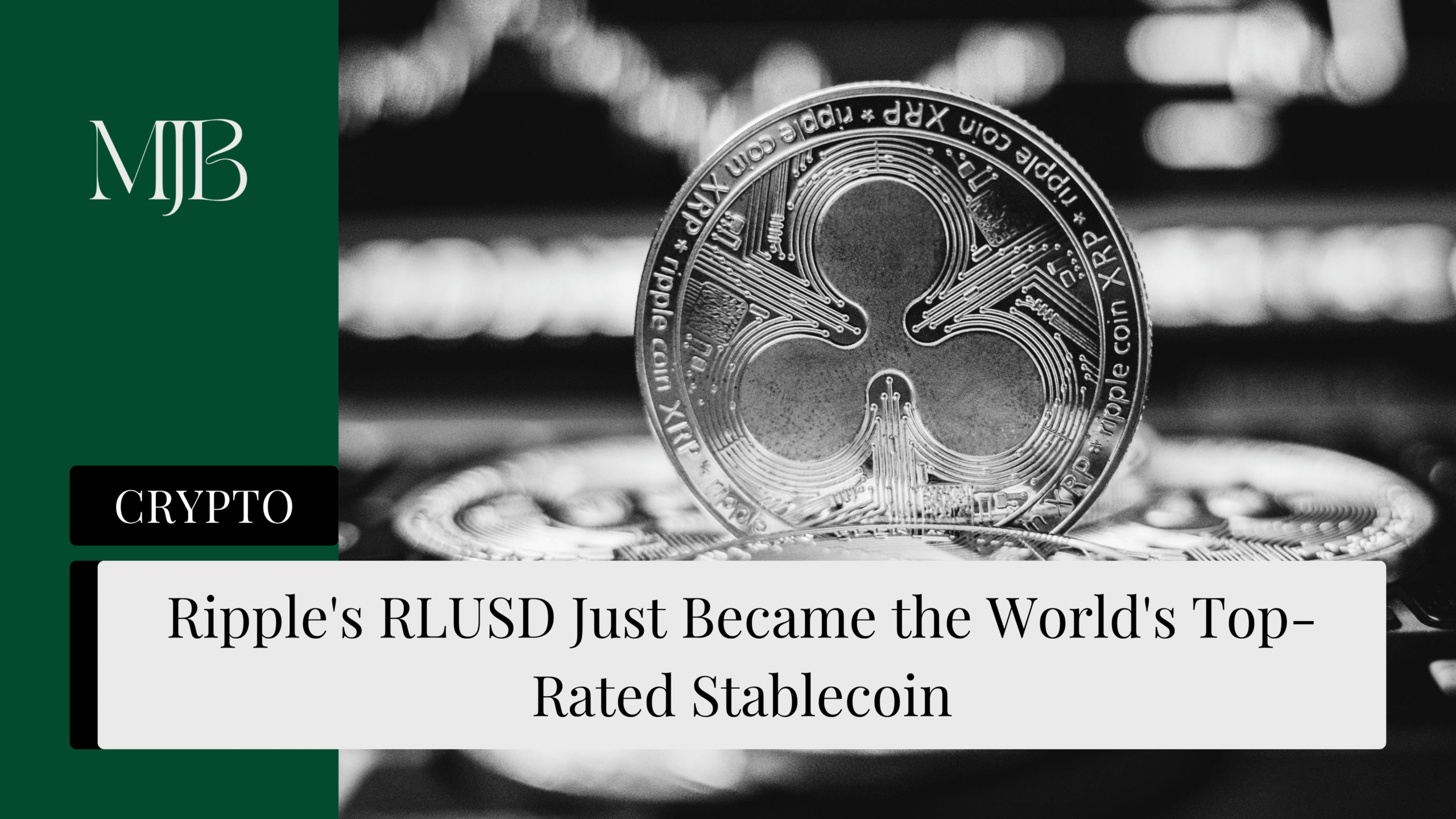Ever wonder what it takes for a stablecoin to actually earn trust these days? Ripple’s RLUSD just found out—by snagging the #1 spot on Bluechip’s rankings with a shiny “A” rating. Whilst most stablecoins are busy playing catch-up with regulatory drama, RLUSD decided to play by the rules from day one. The result? A stablecoin that’s got institutions lining up and competitors scrambling to keep up.
Here’s why RLUSD’s rise matters and what it means for digital dollars going forward.
The Numbers Don’t Lie: RLUSD’s Perfect Storm
On July 18, independent rating agency Bluechip dropped some serious news. RLUSD didn’t just get rated—it immediately became their highest-ranked stablecoin ever. We’re talking category scores that make other stablecoins look amateurish:
- Stability: 0.91 (classified as “Stable”)
- Management: 0.84 (“Very low risk”)
- Governance: 0.86 (“Very low risk”)
Compare that to the competition. Circle’s USDC? A respectable “B+” rating. Tether’s USDT? Ouch—a disappointing “D.” Meanwhile, Gemini’s GUSD sits at third place, and PayPal’s PYUSD rounds out the top five.
What Makes RLUSD Different? It’s All About the Backing
RLUSD isn’t backed by sketchy commercial paper or mystery assets. Instead, it’s got the boring (but brilliant) trifecta: U.S. Treasury bills, government money market funds, and traditional bank deposits.
Bluechip calls this mix “minimal credit and duration risk”—finance speak for “this thing’s rock solid.” When regulators and institutions see Treasury backing, they see safety. When they see mystery assets, they see lawsuits waiting to happen.
Regulatory Street Cred That Actually Matters
Whilst other stablecoins are fighting regulators, RLUSD embraced them. It’s regulated by New York’s Department of Financial Services (NYDFS)—arguably the toughest financial regulator in the U.S. That means strict custody requirements, reserve reporting, and the kind of oversight that makes CFOs sleep better at night.
But Ripple isn’t stopping there. They’re applying for licenses in Luxembourg for EU operations and pursuing a national trust bank charter in the U.S. Translation? They’re building a regulatory moat that competitors will struggle to cross.
The Enterprise Play: Why Institutions Are Paying Attention
RLUSD’s secret weapon isn’t just compliance—it’s partnerships that matter. BNY Mellon handles reserves custody (because when you’re managing billions, you want the pros). Amina Bank provides direct support for institutional clients who need white-glove service.
These aren’t flashy crypto partnerships designed for headlines. They’re the boring, essential relationships that make enterprise adoption possible.
The Bottom Line
RLUSD’s #1 ranking isn’t just a win for Ripple—it’s proof that boring compliance beats flashy promises. In a world where stablecoin trust is everything, RLUSD just wrote the playbook for how it’s done.
FAQ
Q1: Why did RLUSD get a higher rating than USDC?
A: RLUSD’s superior governance structure and regulatory compliance with NYDFS gave it the edge. Circle’s USDC, while solid, doesn’t match RLUSD’s institutional-grade backing and oversight.
Q2: What makes RLUSD’s asset backing special?
A: Unlike many stablecoins, RLUSD is backed entirely by U.S. Treasury bills, government money market funds, and bank deposits. This eliminates the credit risk associated with commercial paper or other riskier assets.
Q3: Is RLUSD available for retail investors?
A: RLUSD is primarily designed for enterprise and institutional use cases. Individual availability may vary by jurisdiction and platform.
Q4: How does NYDFS regulation benefit RLUSD users?
A: NYDFS imposes strict requirements on custody, reserves, and reporting, ensuring transparency and safety that many other stablecoins can’t match. It’s like having a financial watchdog that actually has teeth.
Q5: Will other stablecoins catch up to RLUSD’s rating?
A: Possibly, but it requires significant investment in compliance infrastructure, regulatory approvals, and asset backing improvements. RLUSD’s head start in institutional relationships gives it a meaningful advantage.
DISCLAIMER
Effective Date: 15th July 2025
The information provided on this website is for informational and educational purposes only and reflects the personal opinions of the author(s). It is not intended as financial, investment, tax, or legal advice.
We are not certified financial advisers. None of the content on this website constitutes a recommendation to buy, sell, or hold any financial product, asset, or service. You should not rely on any information provided here to make financial decisions.
We strongly recommend that you:
- Conduct your own research and due diligence
- Consult with a qualified financial adviser or professional before making any investment or financial decisions
While we strive to ensure that all information is accurate and up to date, we make no guarantees about the completeness, reliability, or suitability of any content on this site.
By using this website, you acknowledge and agree that we are not responsible for any financial loss, damage, or decisions made based on the content presented.






